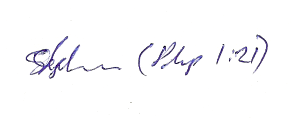<p>
</p>
<p><br />
For Topics, yes.<br />
<br />
For commentaries, dictionaries, devotionals, etc with no RTF header--<em>no, </em>there <u>are</u> differences in the way it's rendered in other RTF viewers and editors. e-Sword wraps these modules with its own RTF header. Therefore, the RTF content we write for these modules types (or T4 writes in most cases), must be compliant with the header e-Sword adds.<br />
<br />
For example, what does /f1 mean in Microsoft Word? It means whatever font 1 is set to in the header. In an e-Sword commentary, dictionary, Bible, etc (with no header), \f1 can only mean one thing--the Greek font set the user in e-Sword (which by default is Titus Cyberbit Basic). It could mean hundreds of things in other RTF viewers. Just one example--there's <em>many </em>others.</p>
<p><br />
</p>
<p> </p>
<p>Hi Josh,</p>
<p>In a bblx (SQLite) database file in respect to the languages that e-Sword can handle, in the Details Table, in the Font Record of the Database, the font for the Bible is set. It is this that e-Sword actually reads. So when you see . . .</p>
<ul>
<li>DEFAULT this is the English Font</li>
<li>GREEK</li>
<li>HEBREW</li>
<li>CHINESE</li>
</ul>
<p>and etc, these are the reserved rtf words by Microsoft which e-Sword uses. But what the Font face is used for the language, then that's a different story. I think (better ask Rick Meyers to be more certain) this is programmably done.</p>
<p> </p>
<p>So; both Hebrew and Greek uses TITUS Cyberbit Basic, and from memory TITUS Cyberbit Basic is \f2 (I think). Now, it really doesn't matter if \f2 (or whatever it is) that is used to identify the font, because it is that font which has been chosen to read the rtf reserved words for HEBREW and GREEK . All that matters, irrespective of reserved words is that it matches the font that has been chosen for it.</p>
<p> </p>
<p>For example, the Default font for e-Sword right across all its resources/modules is Georgia for English text. It doesn't matter if its a Bible, Commentary, Dictionary Topic Note, Study Note, or what ever. The reserved rtf word DEFAULT reads it. I changed the default font to Times New Roman right across e-Sword, and the rtf reserved word reads that because its English that its reading. And its that is what matters.</p>
<p> </p>
<p>I had a good play around with the Fonts in e-Sword, and I know that, I to have say, Times New Roman to read Hebrew, it actually looks crap, so it pays to leave the font set at its default. But for English Text it doesn't matter so much.</p>
<p> </p>
<p>Now getting to your rtf headers, These are the same that Microsoft has put out, there are no differences irrespective of the resource type. bblx modules uses the same rtf code and headers as topic note modules. After all, rtf is rtf any-which-way you want to cut it. Only where differences lie are the versions of rtf code. e-Sword 10x uses rtf version 1.9.1 right across the board. As for he headers themselves, you only have what you want in the viewer. Topic, Study, and Journal Notes would have a few more than the Bible, Commentary, Dictionary and etc viewers. Outside of that, everything else is the same.</p>
<p> </p>
<p>Blessings,</p>
<div>

</div>























